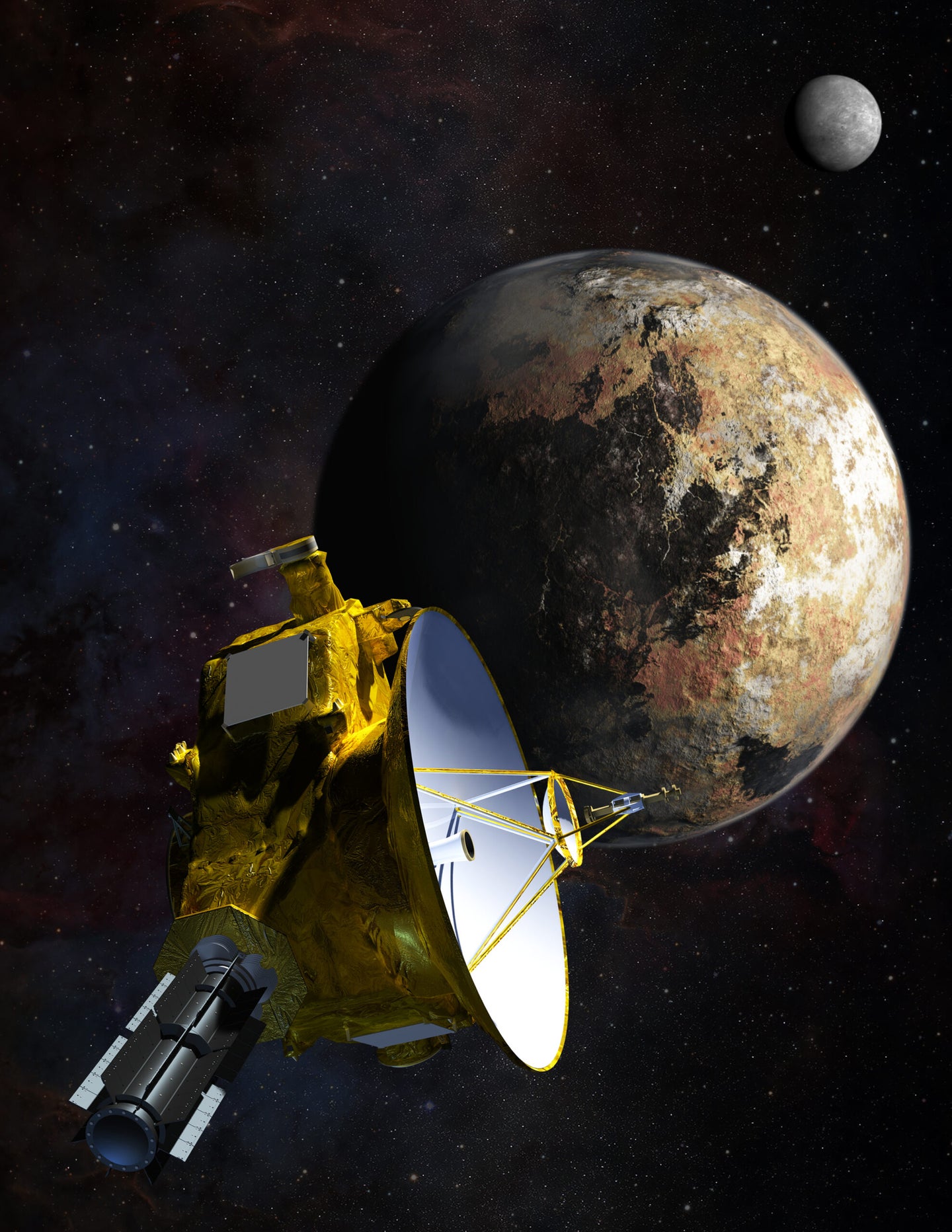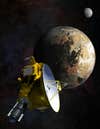Your Ultimate Guide To The Pluto Flyby
Witness history in the making


Pluto And Charon
It’s not everyday we get to explore a completely new planet. But on July 14, NASA’s New Horizons spacecraft will become the first to visit Pluto. (And, oh yes, we did just call Pluto a planet!—more on that later.) The likes of this encounter haven’t been experienced in decades. We explored our solar system’s rocky inner planets in the 1960s and early 70s, the gassier middle planets in the late 80s, and now we’re finally about to add the final piece of the puzzle by probing the icy worlds of the outer solar system.
“There’s not another mission like this in our time,” says New Horizons principle investigator Alan Stern. “We’re the only 21st century team that’s planning to explore a frontier planet, and no one’s planning to do it again.”

What We May Find
With its suite of optical, ultraviolet, and infrared imaging tools, the spacecraft will swoop past Pluto at a distance of about 7,800 miles. From there, the 1,500-mile-wide planet will appear about as large as a basketball that’s four feet away. Any closer, says Stern, and the images we get back will be blurry. Any further away and we won’t be able to see as many details.
Pluto’s largest moon, Charon, which is half the size of the planet, will be about 3 times farther away. The New Horizons team timed it so that Charon would be on Pluto’s dark side during the flyby, so that the light reflecting off the moon might light up the far side. “Nonetheless we’ll still get very good imagery,” says Stern.
The spacecraft’s trajectory was specifically planned to catch glimpses of Pluto’s four tinier moons as well—Styx, Nix, Hydra, and Kerberos.
The Countdown
After a nine-year journey, New Horizons will reach its closest approach to Pluto at 7:49 a.m. on Tuesday, July 14. In the mission headquarters at the Johns Hopkins Applied Physics Lab, a roomful of scientists and reporters will count down to the approach, and the festivities will be broadcast live on NASA TV. Unfortunately, it sounds like the initial imagery won’t be available until July 15. Pluto is billions of miles away, so it takes 4.5 hours for information to travel from New Horizons to Earth. Plus, the spacecraft is going to be too busy collecting data during this once-in-a-lifetime opportunity to turn around and beam stuff back to Earth.
“On Tuesday, it’s going to be raining Christmas presents, and we don’t know what’s inside them.”
What New Horizons Might Find
There’s no telling exactly what New Horizons will find once it reaches Pluto—that’s one of the things that makes it such an exciting destination. “On Tuesday, it’s going to be raining Christmas presents, and we don’t know what’s inside them,” says Stern. But scientists have made a few educated guesses.
1. Moons And Rings
Pluto has five known moons, and the New Horizons team is somewhat surprised that the spacecraft hasn’t spotted any new ones during its approach. But the spacecraft is still 2.9 million miles away, so there’s a small chance that more could turn up.
More probable is the chance of finding rings. Astronomers have suggested that Pluto could be encircled in faint disks of dust, but so far New Horizons hasn’t discovered any. Once the spacecraft has flown past the tiny planet, it will look back and if the rings are there, they might be easier to spot when they’re framed against the sun.

Pluto’s Trajectory
2. Snow
Pluto has a thin atmosphere that’s a lot like our own in composition, containing nitrogen, oxygen and small amounts of methane, carbon monoxide, and hydrocarbon. Pluto also has weather. “We could see many different kinds of weather,” says Stern. “We know it snows there.”
3. Ice Volcanoes
Cryovolcanoes, or volcanoes that erupt frozen materials, have been found on Neptune’s moon Triton. Triton and Pluto are considered to be icy siblings, so maybe Pluto has cryovolcanoes as well.
4. Probably Not Rivers Of Neon
Pluto’s atmosphere is thought to contain neon, and at the freezing cold temperatures on Pluto, neon condenses into a liquid. So it is technically possible that neon could flow like water on Pluto, but it is highly unlikely, says Stern. “I might sit next to the Kardashians at dinner tonight. It’s not likely, but it could happen.”

We <3 Pluto
5. A Subsurface Ocean
Pluto, like many of the frigid worlds of the outer solar system, may harbor an ocean beneath its surface.
6. An Atmosphere On Charon
Charon is so large in comparison to Pluto that the moon does not orbit it nice, like Earth’s moon. Instead, like two ice skaters spinning, Pluto and Charon orbit around a center of gravity that’s somewhere in between them, forming a binary planet system. Because of this close interaction, some researchers have suggested that Charon might be suctioning off some of Pluto’s atmosphere. If so, it would be the first known case of a planet and a moon sharing an atmosphere.
A Planet?
In 2006, Pluto was downgraded from a planet to a dwarf planet, and Stern and other scientists have been fighting against the demotion ever since. The International Astronomical Union, which is responsible for naming astronomical objects, said that because Pluto doesn’t have enough gravity to clear its orbit of other space rocks, it couldn’t be considered a planet. Pluto is located in the Kuiper Belt, which is full of big space rocks, while the other planets primarily have their orbits all to their own. But it’s unclear whether any of those legitimate planets would be able to clear their orbits if they were in Pluto’s place.
Planetary scientists prefer to define a “planet” as an object orbits the sun and it has enough gravity to be round–a definition that Pluto fits into nicely.
The decision about how to define a planet should have been left up to the planetary scientists, Stern says, not the astronomers. “If you needed brain surgery, you wouldn’t call a podiatrist. You don’t go to a tax attorney to file your divorce papers. … Planets are completely different from galaxies.”
Since New Horizons will give us our first clear images of Pluto ever, Stern hopes the discoveries it makes could help to reinstate Pluto as a planet.
“There’s not another mission like this in our time.”
So When Will We Get To See Some Of This Awesome Stuff?
The short answer is, not soon enough! The spacecraft will blast through Pluto’s system at a speed of about 35,000 mph, snapping photos and collecting data for 12 days. The information it gathers will be stored onboard the spacecraft, to be beamed back bit by bit, across almost 5 billion miles of space, over the next 16 months after the flyby. Sixteen months is a long time to wait to get our Pluto fix, but the incredible photos and information it sends back will surely be worth the wait.

Artist’s Conception